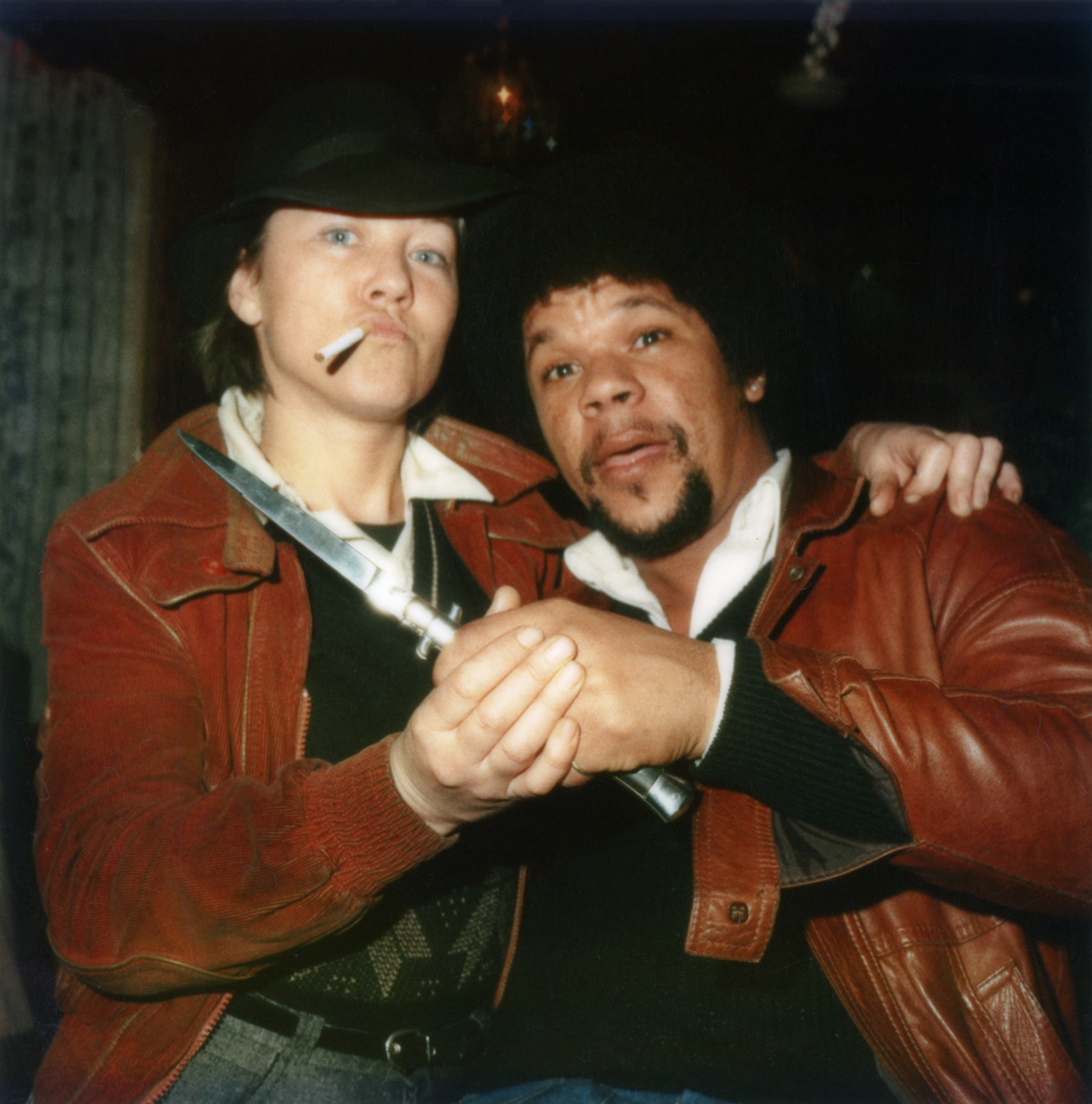Vintage ’80s Polaroids of Amsterdam’s barflies
- Text by Miss Rosen
- Photography by Marc H. Miller and Bettie Ringma

In spring 1979, Bettie Ringma and Marc H. Miller moved from New York’s Lower East Side to Amsterdam. The newly arrived couple had already become known on New York’s downtown art scene, taking “Paparazzi Self-Portraits” with the new Polaroid SX-70 instamatic camera, and giving the world a taste for instant gratification.
In search of a way to support themselves in a new city, they remembered a photographer hustling Polaroid portraits at Coney Island and decided to test the waters. “We tried first at Zandvoort Beach but it was too much work,” Miller recalls. “The sand was potentially deadly for the camera so we moved to the nightclubs and it clicked right away.”
For next two years, they made the rounds five or six nights a week, shooting anywhere from 30 to 100 portraits a night of locals at old-school bruin cafés, Turkish cafés, soccer bars, gay bars, discos, red-light district bars, and tourist traps. They describe the portraits as “tronies,” comparing them to 17th-century tavern paintings by artists like Adriaen Brouwer who painted typological portraits very similar in spirit.

Bar girl with live snake at Chez Tony
Long before digital photography, the Polaroid SX-70 was the perfect way to get your portrait on the spot. “There are people that want the affirmation of the photos, and the opportunity to get pictures of people they knew primarily through bars and clubs,” Miller observes.
“It’s a little bit theatrical because when we’re taking a picture, the bar doesn’t completely stop but there’s a lot of attention on the process and some of the characters in these bars used that to assert their presence. There are people that want the affirmation of the photos.”

Customer and performer at Mdm Arthur
Now, nearly 40 years after they were first taken, the photographs will be on view in Amsterdam Polaroids, an exhibition at Stigter Van Doesburg Gallery, Amsterdam (January 13 – February 17, 2018). The pictures give us the perfect slice of life, from the beautiful animeermeijes (bar girls) and the regulars who stop in for a drink, to the immigrants working at local brothels have a cool one after a hard night’s work.
The desire to preserve the moment in time with a Polaroid has been so strong that even though digital photography helped put the fabled camera company out of business for a while, the tradition lives on. “To this day people come by with roses and a Polaroid camera,” Miller observes with a laugh. “Bettie and I can take some credit for that.”

Monique and Majar at Cafe Festival

Photographer Bettie with a man with a big knife on the Zeedijk.

At the Turkish bar Cascade

Bar girl Nettie at Cafe Mascotte

Drinking Group at the Old Bell Inn

Fifi, the French bar girl at the Mexican Saloon

Couple at Jazzland

Ricky and Gigi at the transvestite bar Mdm Arthur
Amsterdam Polaroids is running at the Stigter Van Doesburg Gallery in Amsterdam from January 13 to February 17, 2018. See more of Miller and Ringma’s work on their official website.
Follow Miss Rosen on Twitter.
Enjoyed this article? Like Huck on Facebook or follow us on Twitter.
Latest on Huck

In the ’60s and ’70s, Greenwich Village was the musical heart of New York
Talkin’ Greenwich Village — Author David Browne’s new book takes readers into the neighbourhood’s creative heyday, where a generation of artists and poets including Bob Dylan, Billie Holliday and Dave Van Ronk cut their teeth.
Written by: Cyna Mirzai

How Labour Activism changed the landscape of post-war USA
American Job — A new exhibition revisits over 70 years of working class solidarity and struggle, its radical legacy, and the central role of photography throughout.
Written by: Miss Rosen

Analogue Appreciation: Emma-Jean Thackray
Weirdo — In an ever more digital, online world, we ask our favourite artists about their most cherished pieces of physical culture. Today, multi-instrumentalist and Brownswood affiliate Emma-Jean Thackray.
Written by: Emma-Jean Thackray

Meet the shop cats of Hong Kong’s Sheung Wan district
Feline good — Traditionally adopted to keep away rats from expensive produce, the feline guardians have become part of the central neighbourhood’s fabric. Erica’s online series captures the local celebrities.
Written by: Isaac Muk

How trans rights activism and sex workers’ solidarity emerged in the ’70s and ’80s
Shoulder to Shoulder — In this extract from writer Jake Hall’s new book, which deep dives into the history of queer activism and coalition, they explore how anti-TERF and anti-SWERF campaigning developed from the same cloth.
Written by: Jake Hall

A behind the scenes look at the atomic wedgie community
Stretched out — Benjamin Fredrickson’s new project and photobook ‘Wedgies’ queers a time-old bullying act by exploring its erotic, extreme potential.
Written by: Isaac Muk